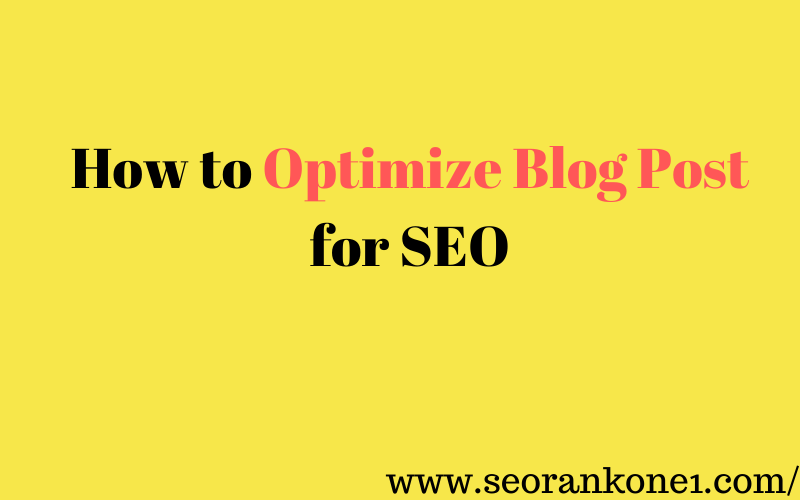Follow the steps about how to optimize blog posts for SEO to internal website. We have describe the way to optimize blog post according to Yoast SEO.
How to Optimize Blog Posts for SEO
Your Target Keyphrase or its Synonyms Must Appear in the First Paragraph
The first paragraph of your blog post is your introduction, that is a key location for both users and search engines. Including your focus Keyword in your introduction You would like to make your topic clear as soon as possible to search engine. Sometimes, Google uses your post first paragraph to create a meta description for your blog post itself.
Keywords Density
Keyword density is the percentage of times a keyword appears on a your content of page or post compared to the total number of words on the page or post. In the context of search engine optimization, keyword density can be used to determine whether a web page is relevant to a specified keyword or keyword. If you want to get a optimize SEO with green bullet, then the keywords density should be between 0.5 and 3%.
Keywords in Subheading
Check if your focus keyword is in your headings. The title of your post is really important. You should definitely use your keyword there. Try to use your keyword in at least one of your subheadings as well.
Try to Use the Exact Match of Your Target Keyword in SEO Title
You can optimize your seo title by Adding your keyword to your SEO title. When you search something on search engine, you will see list of SERP. The SERP consist of three element.
- SEO title
- URL
- Meta description
Don’t get confuse between SEO title and main heading or H1, both are different. SEO title means title of your Post or SERP ( Meta Title ) while heading is the part of your body text written in h1 to h6.
Meta Description Length
Meta description is a short text you can add to your post or page. It is sometimes shown in the snippet of your page in Google’s SERP. You can check and optimize your Meta description by writing 120 characters to 156 characters.
Optimize Image with Alt Tag
You can optimize your post or page image by adding alt attribute. Alt attribute also called an alt text or alt tag which is used to optimize Image. Always use your focus keyword in the alt attributes to optimize your images
Target Keyword in Slug or Url
when you live your blog post or page, article make always try to create your Url SEO friendly, to so you must have to add focus keyword in Url. SEO friendly URL is one that is focused and try to keep your URLs short & simple as possible. A good URL makes it easy for visitors and search engines to figure out what the page is about.
Website Internal Links
Google follows links to discover new content on websites and to rank this content in the search results. If a post or page gets a lot of links this is a signal to Google that it’s an important or high value article. This counts for internal as well as external links.
If you want your post to rank well in the search engines, it should have one or more followed links to it. Google will not find the post or page on your website that don’t get any links. So if you want Google to be able to rank your post or page in the search results you should add links to it.
Target Keyword or Phrase in Meta Description
Meta Description is the second most important factor of SEO after the title. Make sure your meta description for post or page must contain target keyword.
Text or Content Length
Every page on your site needs to contain a certain amount of words to be able to rank. How long your text should be, depends on the kind of page. There are 3 types of page According to Yoast SEO.
Taxonomy Page: Should have 250 or more than 200 words. taxonomy within WordPress is a way of grouping posts together based on a select number of relationships. By default, a standard post will have two taxonomy types called Categories and Tags which are a handy way of ensuring related content on your website is easy for visitors to find.
Regular post or page: Must have 300 or more than 300 words content. Regular post or page means your website page and blogs.
Cornerstone content page: More than 900 words content. Cornerstone content is the core of your website. It consists of the best, most important articles on your site, the pages or posts you want to rank highest in the search engines.
SEO Title Length
SEO title means Meta title that appear in search engine result page. Make sure that not to use more than recommended length of tile tag. check meta title length



